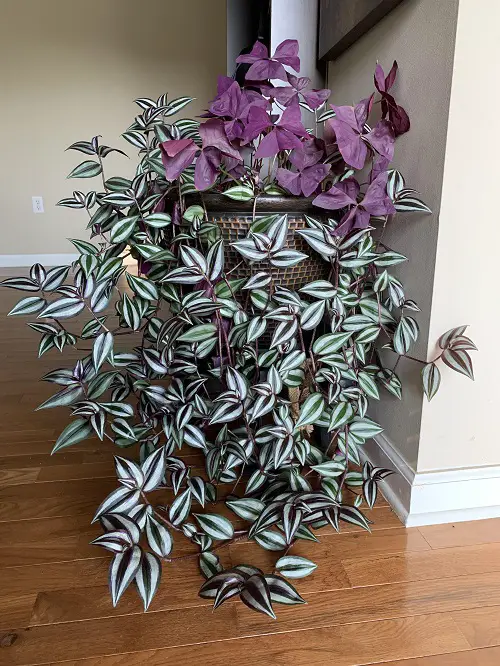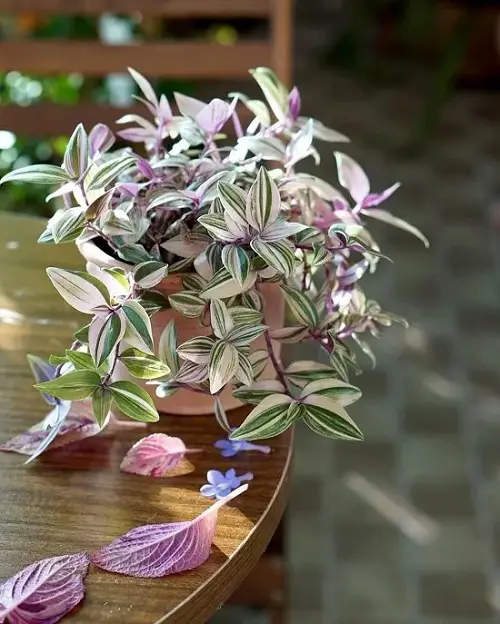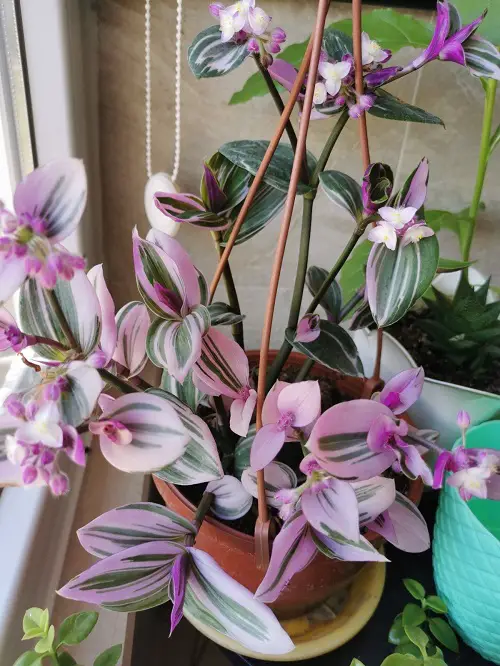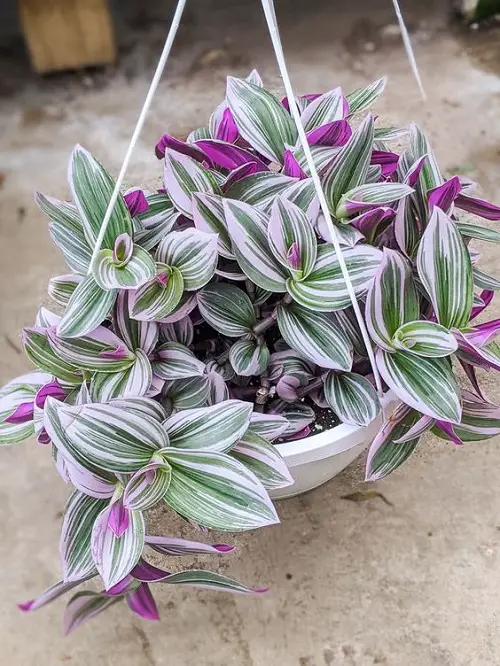Do You Have a Tradescantia? If not, we’ll give you several reasons why you must definitely have one in your collection!
Colorful and trailing—these are the highlights of tradescantia, and it is probably one of the most recognised plants in America, too. If you are wondering why, and don’t have one in your collection, well, you’ll get one after reading this!
Lets Start With its Interesting Name – The Wandering Dude!
Not long ago, this plant was famous by the name—wandering jew. However, the “Jew” in it made people confuse, and sorta angry, as it related it to some biblical story. The tale in which a man mocked Jesus when he was on his way to the cross, and that man, then, was cursed to wander the Earth. Umm, do you see the connection?
To put an end to the confusion and anger, the “Jew” in the plant was replaced by “Dude,” and that’s kind of relatable, too, as it wanders and trails anywhere you grow it!
The Reasons You Must Have a Wandering Dude

1. You Can Play With the Color of Its Leaves
What if I tell you that you can have three wandering dude plants with different color leaves? It is perfectly possible! All you need to do, is play a little with the sunlight exposure.
When the plant receives ample bright and indirect light, with a few hours of direct and mild morning sunlight exposure, it remains vivid and purple.
However, for a little washed out look, start exposing it to a bit of shade, and you will see it making the purple on the leaves, a little less vivid. It might show you a combination of pink-purple on the foliage.
For a completely washed out look, having that more silvery sheen, you can expose it to indirect and bright light for just 2-3 hours in a day.
Do note that for a healthy specimen, it is important for it to get bright and indirect light all day long. Avoid exposing it to the harsh afternoon sun, as it can burn its delicate leaves.
2. If you Have One—It is Un-Killable!
You just can’t kill this plant, like you can kill the other ones in your collection. It is not at all fussy when it comes to the growing medium, and will be more than happy to thrive in 100% garden soil. So, all your worries about picking the right potting mix goes out of the window!
Light? Not a problem! It happily thrives in the combination of sun and shade. So, you don’t even have to pick a sunny spot for it. And yes, these trailing beauties aren’t a headache when it comes to watering, too! Moistening the growing medium, once a week, will suffice!
3. It is a Natural Rooting Hormone!
No! I’m not kidding! While taking its stem for propagating, you might notice them oozing out a liquid of some sort. Well, that can be used as a rooting hormone while starting other plants from cuttings.
Simply dab the cut end in it, and plant. You can also put a few drops of it in the water if you are starting the cutting hydroponically!
4. And Yes, It Grows Flowers!
Yes Sir! These plants are not just about the trailing show of purple leaves lined with beautiful streaks of silver. They also put up a wonderful presentation of small flowers that come in purple-white colors.
To see those wonderful blooms, you got to do what you do with other flowering plants—plenty of indirect light (along with 3-5 hours of morning sun, at least), and bi-monthly application of balanced liquid fertlizer, after diluting it to 1/2 of its strength.
5. You Can Have Many from One
This plant is notorious for its fast growth. So much so, that you might see it covering the open space in your garden at an alarming rate! But that comes with an advantage!
See those trailing stems? Simply snip them out (4-6 inches long), right below the node, and you are good to plant them in a new spot in the yard or a pot. As simple as that!
6. They Come in Many Varieties!
With over 75 species, there is one tradescantia for everyone! For the best display, do not miss Tradescantia sillamontana, for its stunning soft and fuzzy leaves.
Tradescantia pallida is also a great pick, especially if you want to cover the borders, or any open space in the garden. Tradescantia fluminensis is a fantastic option for anyone looking for a hanging basket plant. Lastly, I would also suggest you to go for Tradescantia navicularis for its thick, boat-like leaves.







I would really like to try these I have problems with gardening. Every year.so I would like to try something new.thank you very much for all the information.have a good day.